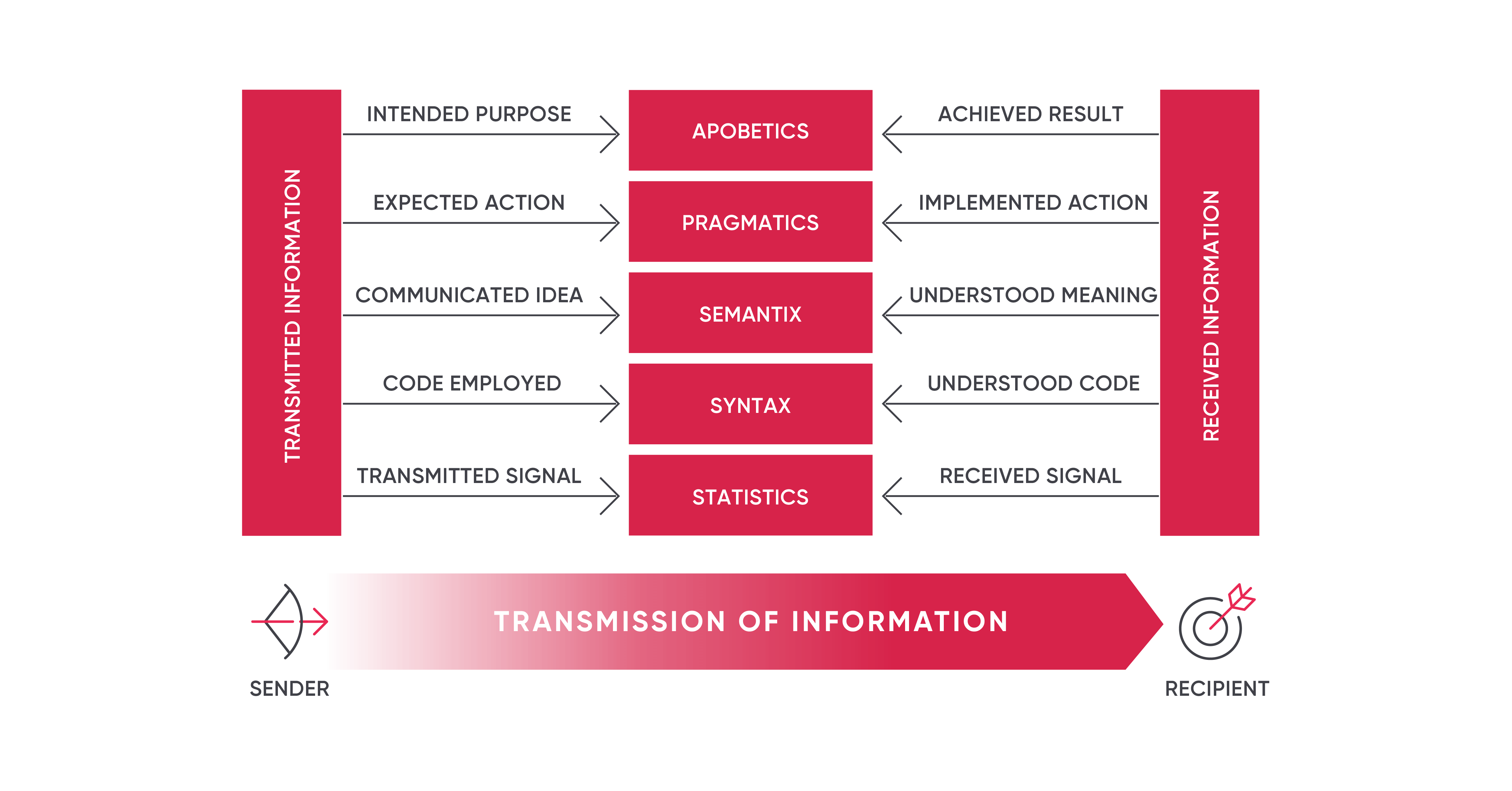Part 2 in a 3-part series on revisiting the definition of Information.
In this second blog post in a three-part series, we’re exploring the connection between Laws of Nature and information, considering the implications on information management practices and designs, and how it applies to your Data Vault. Read the first blog post here.
Here’s a quick recap diagram for reference:
To achieve full information status, the following 5 levels must be in place:
- Statistics – consistent repeated use of the same symbol
- Syntax – sets of symbols expressed within constraints or rules for expression
- Semantics – the associated meaning of the code
- Pragmatics – the expected and implemented actions
- Apobetics – the purpose of the exchange of information
The complete characterisation:  Let’s explore if there are Laws of Nature that apply to information and then consider the implications on information management practices and designs, and how it applies to your Data Vault.
Let’s explore if there are Laws of Nature that apply to information and then consider the implications on information management practices and designs, and how it applies to your Data Vault.
These are the Laws of Nature for information:
LAW 1: Anything material, such as physical/chemical processes, cannot create something non-material.
- Example: just because we have computers, storage and networks does not create information in and of itself. It must be configured, designed, agreed and created as a task of its own.
LAW 2: Information is a non-material fundamental entity and not a property of matter.
- Example: “ … information is information neither matter nor energy …” there must be an intelligence involved, a purpose, an expected action based on the idea as understood with both the sender and receiver involved.
LAW 3: Information requires a material medium for storage and transmission.
- Example: If a system has “virtual” fields, it can’t be used in your Data Warehouse. Or oral traditions die out as opposed to written text surviving for thousands of years. If you want to transmit/integrate information it must be stored (e.g. DNA is a great example of this requirement to store information in order to transmit or share)
LAW 4: Information cannot originate in statistical processes.
- Example: the inputs for a statistical process requires a purpose – a hypothesis to start. Purpose does not materialise out of thin air.
LAW 5: There can be no information without a code.
- Example: if there is no language or syntax there is no understanding
LAW 6: All codes result from an intentional choice and agreement between sender and recipient.
- Example: If someone speaks Xhosa it is unlikely most of the readers would understand it. We agree to present the text in English to facilitate understanding.
LAW 7: The determination of meaning for and from a set of symbols is a mental process that requires intelligence.
- Example: the very use of symbols as a means to communicate is an intelligent process. You can teach a Chimpanzee sign language as a measure of intelligence is present. Not so much for a snail.
LAW 8: There can be no new information without a purposeful and intelligent sender.
- Example: think about business rules – technical debt – they do not resolve themselves. It requires careful thought, design and agreement with the business to become useful.
LAW 9: Any given chain of information can be traced back to an intelligent source.
- Example: every book has an author, every sentence we utter originates from a measure of intelligence.
LAW 10: Information comprises the non-material foundation for all:
- Technological systems
- Works of art (music, visual etc.)
- Biological systems
These are the laws that govern information. If all five layers are in effect, we have a full definition of information. Let’s analyse how these laws manifest itself in our technology solutions:
- As much as we would love this to occur – just having the servers and hard drives will not build the system (Law 1 and Law 2).
- When we build a system like SAP, it relies on the information being captured (law 3) and stored for it to integrate across business processes – if it is not in the data, it did not happen.
- For statistical processes to be of any use it needs information as an input (law 4) so it cannot define the business process on its own.
All of this must be developed in some sort of code base (law 5) that clearly integrates as a whole.
- Business process design is a specific creative activity that is an input to the system functionality (law 6) – generally referred to as business rules.
What is the golden rule for data warehousing (do not start without a subject matter expert) Law 7.
- Unless said expert has a use for the functionality it will not spontaneously appear (law 8).
- All of this must pass audit scrutiny (law 9).
- SAP and others like it are a form of a technology solution with the sole purpose to capture the business processes and their related information captured.
This gives us a microcosm of the laws governing information. In the next article we will explore the implications of these laws specifically in the context of Data Vault 2.0.
 Let’s explore if there are Laws of Nature that apply to information and then consider the implications on information management practices and designs, and how it applies to your Data Vault.
Let’s explore if there are Laws of Nature that apply to information and then consider the implications on information management practices and designs, and how it applies to your Data Vault.